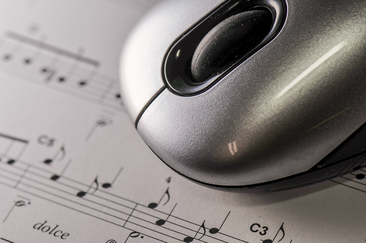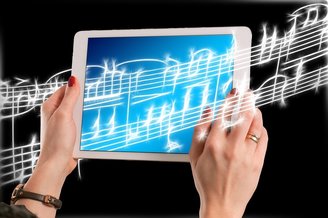 Although technology has played a role in the American education system for quite some time, music programs in particular have been slow to integrate it into the classroom. In addition to the usual resistance to funding the arts, this delay is often due in part to the physical layout of the typical music classroom, where crowded students typically have little-to-no desk space, thus making the use of electronic keyboards highly impractical. Despite these challenges, most music educators believe in the value of educational technology. In a 2013 PBS survey, teachers reported that technology increased their students’ desire to learn and reinforced and built upon previous classwork. Additionally, using modern technological tools in the music classroom can free up some of a teacher's limited instructional time by making routine tasks faster and easier. It can also improve communication between students and teachers, as well as between teachers and parents. The following are two ways that music teachers can add technology to their classrooms to augment the learning process: Mobile Devices for Sheet Music Of all the technological advances used in the classroom, the tablet is arguably the most popular. One of the best uses of the tablet in a musical classroom setting is as a replacement or substitute for paper sheets of music. Instead of dealing with multiple pages of sheet music, students can access all of their materials on this device with just a few taps. Using a tablet for this purpose eliminates the huge problem of students losing their music, thereby removing a major source of frustration for teachers. In addition, students can use tablets to compose songs, access apps, and view study materials and test scores. And best of all, the average tablet doesn’t take up much size and is easy to carry and store, unlike electronic keyboards. One app that music teachers heartily endorse is Piano Street, which gives kids access to over 3,000 classical piano study scores and more than 20,000 pages of sheet music. It also offers practice guides, an audio-video study tool, a music dictionary, and a forum, in which students can read about a wide variety of piano-related topics. Other popular technology options for the music classroom that work well with tablets include Garage Band, Ear trainer, and real piano pro. Digital WhiteboardsAnother great way to include technology in the music classroom is through a digital, or “interactive,” whiteboard. These interactive devices allow teachers to share information on a user-friendly screen that is much more sophisticated than an old fashioned chalk board or dry-erase board.
Interactive whiteboards combine touchscreen technology with a projector connected to a PC or laptop, so any information or documents stored on the computer can be easily displayed on the board for all the students to see. Students can share ideas and explore concepts by physically interacting with the objects on the screen, and teachers can even enhance the interactive whiteboard experience with special pens and erasers. Many instructors also use interactive whiteboards to play instructional videos. Teachers can use interactive whiteboards to introduce new vocabulary words, demonstrate rhythm and tone, instruct students in musical notation, and more. To really engage students, teachers can have their class use this technology to create and play their own original compositions. For inspiration, there are numerous online resources available, including lesson files and templates developed by other music teachers. Undeniably, technology has infiltrated nearly every part of our lives, and it is rapidly changing the way we learn. Music instructors must not only have the desire to bring technology into the classroom, they should also be willing to familiarize themselves with the latest technology and figure out how to best implement it. Children are comfortable using technology in other areas of their lives, and most will adapt very easily to technology in the music classroom. Therefore, teachers don’t need to worry about their students struggling to overcome a steep learning curve. Music teachers might have to explain to administrators how implementing technology in music classrooms can benefit the school as a whole. To ensure that all students in the class have access to technology, teachers, administrators, and parent groups can work together to find grants and donors, or hold fundraising events. Comments are closed.
|
Photo used under Creative Commons from Marina K Caprara
 RSS Feed
RSS Feed
